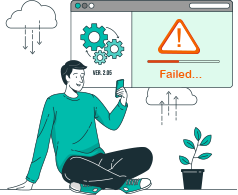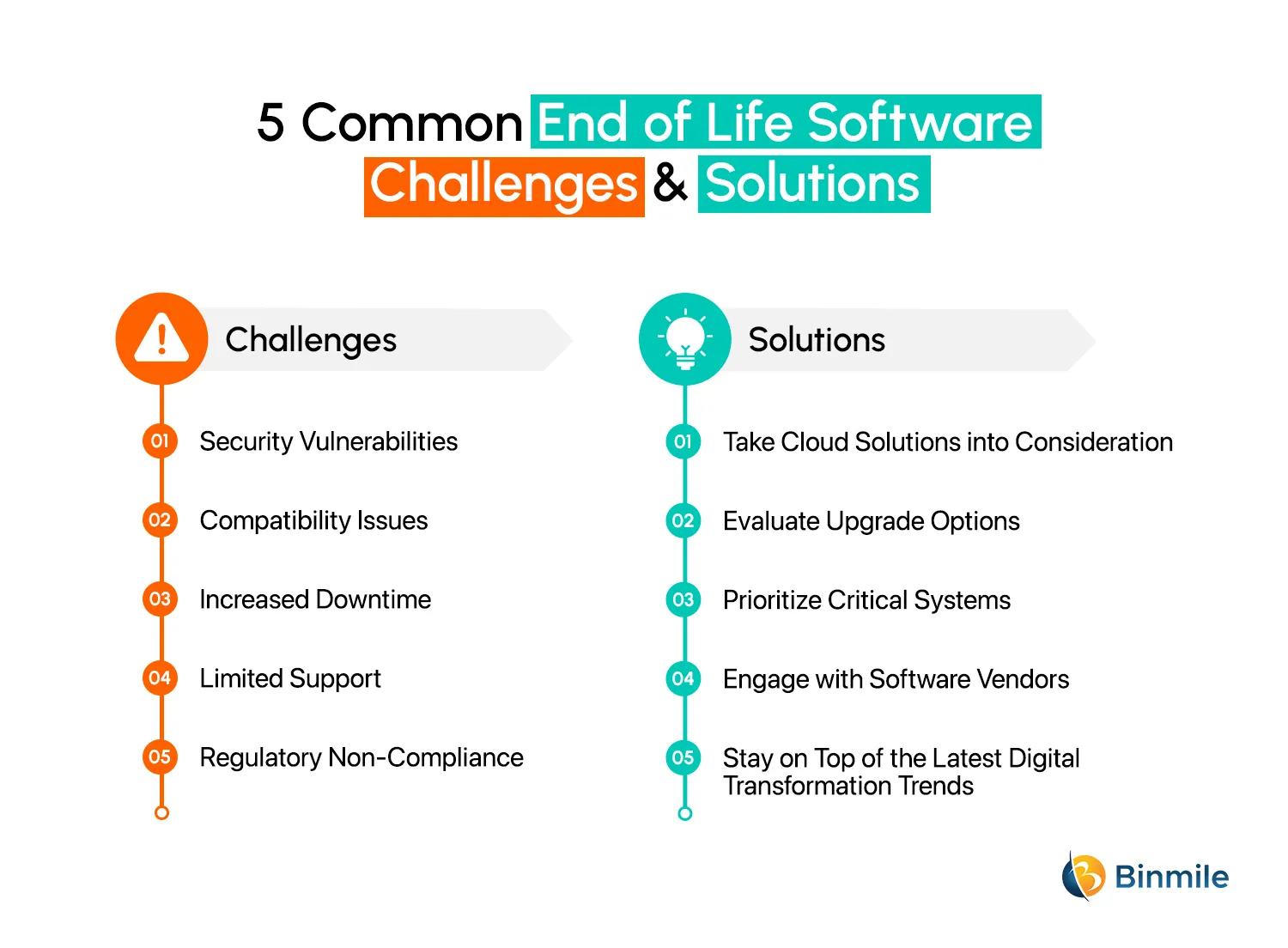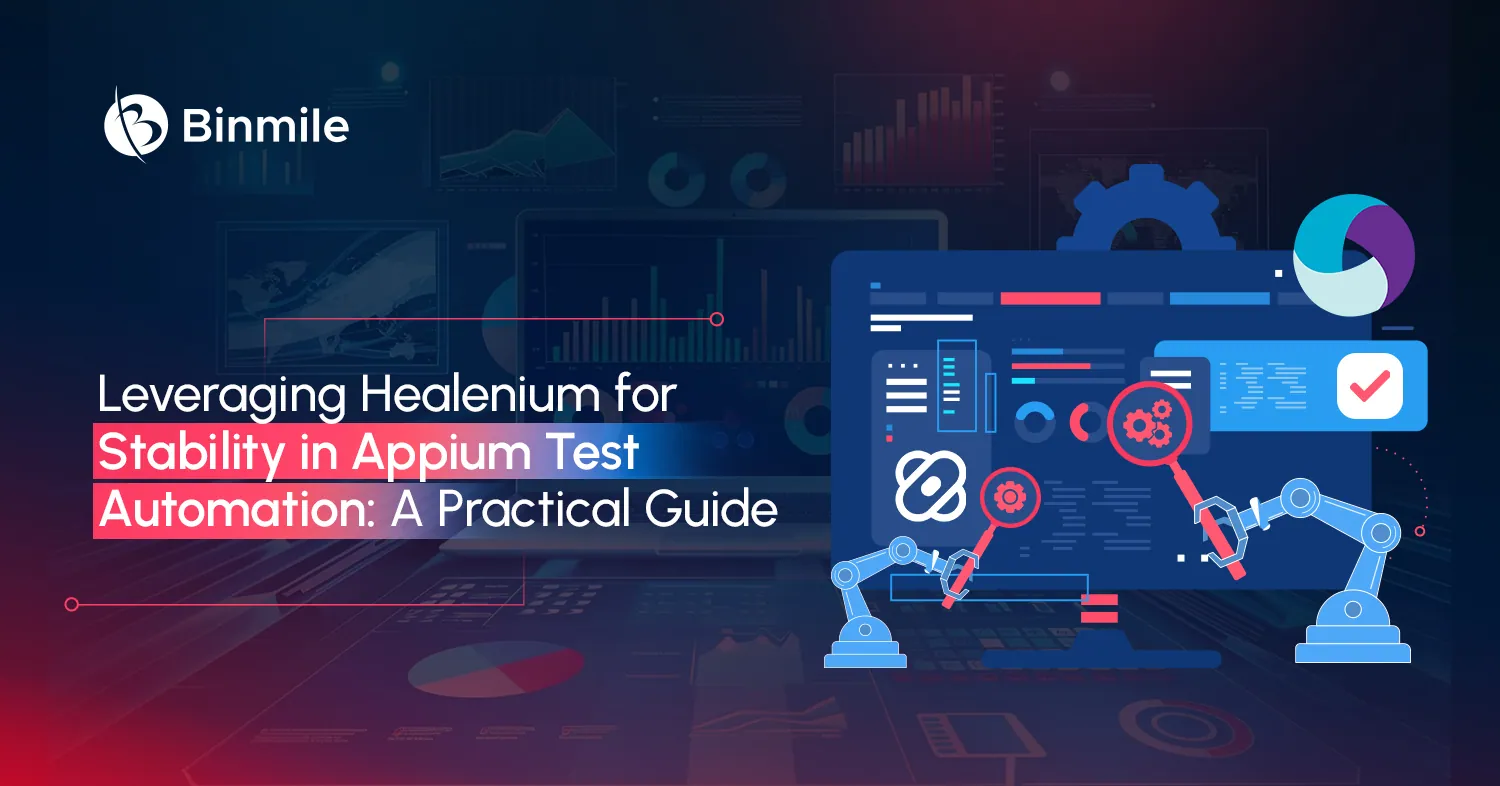Are you aware of end-of-life software? If not, we must tell you that it is just like your favorite game which becomes obsolete and it is not possible to play it on your new console. The same thing happens with your business as well. If it is using old, outdated software for a long time and overlooking the firms shifting to scalable enterprise solutions, the chances are high that several opportunities will be missed in terms of revenue generation or business expansion. Now the question comes, how to deal with computer attacks, slow work, and growing troubles when using legacy systems? In this blog, we have discussed five promising ways to cope with challenges that emerge when experiencing end-of-life in software. Apart from that, you will also learn definitions, examples, and signs that your software is nearing the end of its life. So, be prepared to ditch legacy systems and embrace modern software.
What is End of Life (EOL) Software?
End of Life (EOL) Software is a specific type of software that receives neither fixes nor support and no new variants if something goes haywire. Be it a web browser or an operating system, merchants will ultimately stop supporting or updating particular software.
It means that if you are using specific software that is nearing its end, you are required to act fast and stop using it completely. The biggest reason for doing this is the security loopholes that are found in legacy software systems. Hackers target unsupported software mostly as it is easy to deliver malware through browsers. New versions, security updates, and patches keep you safe from these threats, but when you learn about end-of-life in software that you are using, it leaves your software prone to many threats. Below you can see what end-of-life product means, which could be any one of these or even all:
- Bug fixes, workarounds, and technical support won’t be offered.
- Merchants will not acknowledge any request for new functionalities.
- Major feature releases will only be given for a particular period after the EoL date.
- Online support documentation, wikis, or forums might be accessible offline or get archived on the EoL date.
- Software installations may no longer operate seamlessly.
- Official training for the software might not be available.
One of the best examples of end-of-life in software is Microsoft Windows 7. Post its official EOL date in January 2020, Microsoft refrained from offering regular security updates and support for Windows 7. It means users still relying on the obsolete operating system are more likely to be affected by security vulnerabilities and lack cutting-edge functionalities and enhancements available in newer Windows versions, such as Windows 10.
The moral of the story is you do not have any other option except switching to new software that’s fast, safe, and well-supported by the vendor. While there might be some upfront investment and learning in adopting state-of-the-art transformation services, the dangers of using old software are much more severe than the advantages. All in all, perceiving “end-of-life” is important in the corporate world, like knowing when it’s time to upgrade from your existing business solution to a futuristic custom enterprise solution.
How Can You Know If Your Software Is Reaching End of Life?
As per a top technological research firm, 30% of critical infrastructure establishments will come across a security breach by 2025. As software evolves, it is necessary to be aware of when your software may be becoming an end-of-life product. When particular software nears EOL, it means the vendor won’t offer updates or support down the line. Certain signs that you can pay heed to for determining EOL software are unavailability of:
- Recent updates
- Bug fixes
- Security patches
Apart from that, you can also look for announcements of the EOL date on the website or social media handles of a custom software development company. It is necessary to focus on these notifications because using any software after its EOL can cause your system to experience vulnerabilities and compatibility issues. What’s more? Newer software options may provide better support and features. Therefore, it is advisable to look for the aforementioned signs and if you are still not sure, you can check the official resources of the manufacturer for EOL information, keeping your digital ecosystem safe and secure.
Transform your legacy systems for the future with our Application Modernization Services! Upgrade today for enhanced performance, scalability, and innovation!

5 Best Examples of End of Life Software
In this part, we will explore five remarkable examples of end-of-life in software that were once popular in the technology industry. Whether it is operating systems or communication tools, these EOL products remind us of the dynamic nature of our digital environment.
- Microsoft Office 2007: Microsoft declared Office 2007 to be EOL software in 2017 after the introduction of newer variants.
- Windows XP: Microsoft stopped rendering support for Windows XP in 2014. If you are still using this, you are about to experience cyberattacks anytime soon.
- Adobe Flash: According to a software development company, Adobe Flash officially became EOL software in 2020, which means Adobe won’t release new security patches or updates in the future.
- Google Chrome 49: Chrome 49 is an EOL product, as it was announced by Google in 2016.
- Java Runtime Environment (JRE):The Java Runtime Environment has stopped receiving any support from Oracle, which is why Java apps built on Java 7 won’t run on new variants of the JRE anymore.
Top 5 End of Life Software Challenges with Solutions
Running a business successfully and effectively is not a breeze in such competitive times. With the emergence of digitization, business concerns have upsurged greatly, be it data breaches, cybersecurity, or loss of opportunities because of legacy systems, changing consumer demands, and the rest of the factors. In that situation, protecting your organization from several risks of end-of-life in software has become necessary. But what are those risks that can affect the performance of your business? Let’s take a look at that:
Challenge 1: Security Vulnerabilities
The experts of a leading software maintenance company say that EOL software exposes your organization to greater cybersecurity risks. Without frequent updates, it becomes pretty easy to target such software for cyber threats, eventually resulting in:
- Data breaches
- Intellectual property theft
- Sensitive business information compromise
A giant credit reporting agency named Equifax experienced a huge data breach in 2017 because of unpatched software. That breach resulted in the disclosure of personal information of more than 147 million people, reflecting the serious repercussions of security vulnerabilities in the EOL software.
Solution: Take Cloud Solutions into Consideration
Taking cloud solutions into account is like considering using software with automatic updates and improved security. It minimizes the burden on your in-house IT teams, enabling them to concentrate on strategic initiatives instead of managing software variants. Thus, it is always a wise decision to use cloud integration services for building digital solutions or revamping your EOL software using innovative legacy system modernization techniques.
Challenge 2: Compatibility Issues
Outdated software may affect the company’s ability to grow. Facing compatibility issues with newer technologies can influence smooth integration processes, restricting your potential to embrace modern solutions. Adopting cutting-edge software makes sure that your company remains competitive in a swiftly evolving business ecosystem.
The termination of support for Windows XP by Microsoft translated into compatibility issues for several businesses. The absence of integration with the latest technologies affected their potential to embrace newer solutions and keep pace with industry improvements.
Solution: Evaluate Upgrade Options
Discover all the possibilities of upgrading obsolete software. Check if newer variants are present or if it is a smart decision to shift to alternative solutions that fit your current business needs better. If your business has unique processes, in that case, availing custom software development services will be the best option.
The reason? Well, a trusted software development company can help you develop a business-specific solution depending on your industry concerns, business-specific trends, feature preferences, and tech stack preferences. You can even employ developers depending on your specific project needs. Binmile offers such convenience to their clients.
Challenge 3: Increased Downtime
Depending on outdated software for your business operations boosts the risk of system failures and errors, leading to greater downtime. This not only affects the regular operations of your business but also organizational productivity and revenue generation. But when you opt for the best software development models instead of legacy software, you experience a smoother operational flow sooner than later.
Just so you know, British Airways faced a significant downtime in 2017 when a bug triggered by outdated software, resulted in the cancellation of more than 700 flights. This incident highlighted how risky it is to use outdated systems as it can lead to operational disruptions and revenue loss down the road.
Solution: Prioritize Critical Systems
One of the proven tips to manage EOL software risks is to go with strategy creation. Imagine it as protecting your kingdom. You should recognize and prioritize systems crucial for your establishment. Identify enterprise applications that, if attacked, could have serious consequences. Make a list of goals for transitioning, which could be improving security, enhancing functionality, or aligning with industry standards. You can also consider availing tech consulting services for this job.
Challenge 4: Limited Support
The decreasing support for obsolete software can cause operational challenges. Your team may come across problems in fixing technical bugs, influencing the overall efficiency of the organization. Investing in application modernization services with powerful vendor support acts as a safety net for your operations, driving down potential disruptions.
The WannaCry ransomware attack in 2017 took advantage of vulnerabilities in obsolete Windows OS. Companies using unsupported variants, like the NHS in the UK, received limited support, worsening the impact of cyberattacks further.
Solution: Engage with Software Vendors
It’s like getting into a conversation with your partners. Get in touch with vendors to grasp their support timelines and available options. Some may get you extended support in exchange for a fee, offering a makeshift solution while plans for migration are built. You can even have a word with data consultants and software specialists to get professional application modernization services where your legacy system is updated by leveraging cutting-edge tech, application programming interfaces, and web modules.
Challenge 5: Regulatory Non-Compliance
Continued utilization of end-of-life in software puts the business at risk of non-compliance with regulations. This could translate into legal consequences, financial penalties, and extensive damage to the reputation of the company. Thus, shifting to compliant and up-to-date solutions is a proactive approach to protecting against these risks.
Just to let you know, Uber came across regulatory difficulties worldwide because of its Greyball software designed to mislead regulators. This non-compliance with regulations led to legal repercussions and damaged the reputation of the organization, showing the significance of sticking to regulatory standards.
Solution: Stay on Top of the Latest Digital Transformation Trends
It’s like keeping track of an ever-evolving ecosystem. Set up a process to stay informed about all the software product life cycle in use. Regularly monitor and upgrade the software inventory to proactively resolve potential EOL problems before they become significant. You can even take into account the modern digital transformation trends to stay ahead of the curve and relish future-ready business operations.
Want to future-proof your business and stay ahead of your competition? Revamp your outdated applications with our top-tier Application Modernization Services.

On a Closing Note!
Once your software has become an EOL product, there is no tried and tested method to keep it running. The potential risks of compliance, compatibility, and security override the rewards, especially when you are on a bite-sized development budget. Therefore, it is necessary to modernize your software through End of Life Software strategies and lifecycle management.
By updating older applications with fresh approaches to computing, you can enhance efficiency, security, and structural integrity. And the best part? You don’t need to do it alone. You can always hire one of the top software development companies on the web to effectively modernize your EOL software for a better tomorrow.







